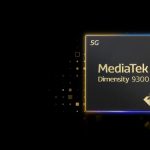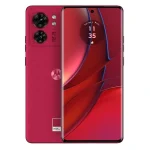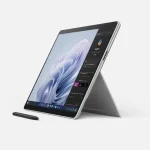The students of Computer Science often encounter a question: Why is a motherboard called a motherboard? Here is a detailed article to answer the question in its best. The motherboard is the main component of the computer. We often refer to it as the main board or mobo for short. This MOBO hardware acts as the mainboard or the central or core assembly of the computer system unit. In other words, much different hardware is connected to the MOBO inside the CPU case. A large circuit board fits into the computer case, where all the computer components connect. For example, there is the CPU socket.
The CPU Socket is where the CPU or Central Processing Unit is placed. Then, there are the memory slots, where we insert the primary memory DIMM modules, known as RAM (Random Access Memory). Moreover, there are also bus slots or expansion slots. And we use these to install various components to add more capabilities to a computer, such as a video card, sound card, network card, etc.
Then there are also the SATA connectors, where you would attach your storage devices, such as SSDs or Hard Drives. In Motherboards, we will have several of these connectors so you can connect multiple storage drives. Moreover, you might find the M2 slot on some modern motherboards. And there is a newer slot for attaching an M2 solid-state drive. And on modern motherboards, you will also find the PCH or platform controller hub, and this hub is the latest chipset architecture by Intel that has replaced the older architecture.
We design computer motherboards to take advantage of the most demanding application of a program. One of the best applications is to meet the system requirements of the 3G application, just like the movie games as high innovative applications of computer programming. The motherboard form factor is a series of versions of the MOBO from AT, ATX, BTX, LPX, and NLP. We broadcast compatible words so that the MOBO will synchronize the processor, RAM, and Video Card(VGA) speed. Unlike only if the MOBO is built-in through the Input/Output ports.
There would be a couple of chips on the motherboard that we call a chipset on older motherboards. So there would be the northbridge chip and the southbridge chip, and these chips would have different functions.
The northbridge, located on the motherboard’s northern or upper portion, acted as a middleman between the CPU, PCI Express Bus, and memory.
The southbridge was located on a southern or lower portion of the motherboard. Moreover, it was responsible for the standard PCI, slots, SATA Connectors, USB, etc. So for the CPU to communicate with these lower interfaces, it had to go through the southbridge.
Now platform controller hub chip has replaced the older architecture. The northbridge functions have been primarily integrated into the CPU in the PCH architecture. So the northbridge chip is eliminated. Additionally, the platform controller hub chip now entirely does the tasks of the southbridge.
We use it to connect the impact printer, one of which is the DOT MATRIX printer. The Epson LX 300 +.
We use it to connect the mouse (green color) and the keyboard (purple).
We use it to connect a computer’s serial device, such as the serial mouse and external modem.
USB 2.0 × 2 ports- these are the ports of the USB devices of the computer. Currently, the versions or speeds of the USB are 1.0 and 2.0 compatible. One of the USB flash drives is attached externally to the system unit. Motherboards come with several input/output interfaces located mainly on the rear input/output panel. So, for example, the most common interface on a motherboard is a USB port.
USB stands for universal serial bus. Motherboards typically have several USB ports because many peripherals, such as keyboards, mice, cameras, external drives, and printers utilize the USB interface. And in addition to connectivity, the USB port also supplies electrical power to that specific device. Most USB ports are mounted in the rear input/output panel. Some are also located on the surface of the motherboard.
 USB Port on Motherboard
USB Port on Motherboard
We use it to connect the 4 pins of the power supply unit (PSU). It is separate from the 20 or 24-pin ATX power supply to provide the DC voltage of the computer processor.
We use a part of MOBO to hold the processor or CPU chip (Zero Insertion Force). The compatibility of the socket depends on the computer processor type—for example, the AM2 socket of AMD and the socket 775 of Intel company.
It is called Dual Inline Memory Module; this is the computer memory or RAM slot. The memory slot depends on the type of memory. Such as the PC 133 SDRAM and PC 400 SDRAM-DDR 1.
It is a group of MOBO connectors separate from the 4-pin power assignments. It provides a DC power output to the system board(SB)from the production of the Power Supply Unit.
It is the manufacturer’s name. So it is essential to know the manufacturer or vendor. So you can download the drivers’ software of the MOBO through the internet site.
In this part, the CMOS/BIOS battery is held to provide 3 volts of direct current/voltage to the CMOS IC. It is so to preserve the computer’s BIOS settings. Such as the time module, hardware information, settings/parameters, etc.
- CMOS-Complementary Metal Oxide Semiconductor.
- BIOS- Basic Input/Output System is a set of a program. It is stored in CMOS IC. Moreover, we use it to preserve the BIOS configuration of the computer.
- CMOS BATTERY PART NUMBER- lithium dry cell CR 2032 3 volts.
We use this connector to connect the IDE cable of the HDD(Hard Disk Drive) or CD/DVD ROM to the Motherboard IDE.
We used them to connect the power LED, HDD LED, Power Switch, and Reset switch of the computer system unit(CPU).
It is a Serial Advanced Technology Attachment. The new standard of the IDE connection array of the computer HDD(SATA HDD)to the motherboard system.
We use it to disable the BIOS default setup. Such as disabling the supervisor password of the BIOS.
Yes, flashing the BIOS removes the password.
- Turn off the CPU.
- Change the jumper to clear.
- Remove the CMOS battery.
- Reinsert the BIOS battery.
- Change the jumper to normal.
- Power up the computer.
- Press “Del” or “F2” to enter the BIOS setup.
It is the type of BIOS IC that the computer MOBO uses. We install a program set in this IC to preserve the computer’s BIOS configuration settings. Such as the speed of the CPU chip and RAM, etc.
We use it to connect the front panel USB 2.0 x 2 USB port.
It is the connector of the FDD cable through the system board. Usually, there are 34 pins out of it to connect the 3.5″ 1.44MB Floppy Disk Drive.
It is a part of the computer motherboard. We use it to connect the I/O cards of the computer, such as LAN card, WIFI card, USB expansion card, and Sound card.
It is a part of the computer that holds the computer video card(VGA), the PCIe card. The old video card type is the AGP or Accelerated Graphic Ports and the standard of the PCIe. The latest and fastest card is being installed and is most compatible with the computer’s 3d and 4g gaming.
Here, you can get the motherboard driver software version to download it to the manufacturer’s website.
It is the AUDIO Modem Riser. It is being used to demodulate and modulate the computer’s analog audio.
We use it to interface the DB cord of the monitor screen or connect the computer’s monitor screen. The fastest video card versions are based on the standard of the VGA slots, ex: the AGP and PCIe card. Some Motherboards have built-in video adapters. And this is known as integrated video because the video adapter and the motherboard are essentially one unit. Older motherboards have either a DVI or VGA port, while modern motherboards will have an HDMI or a display port.
 VGA Port
VGA Port  HDMI cable
HDMI cable
Now Integrated video adapters are not very powerful. They are suitable for regular everyday use with light applications. But they can fall short when used for extensive graphic applications such as gaming. As a result, many people will bypass the integrated video and add an expansion video card with enough power to suit their needs.
It is called the Local Area Network of the computer. It connects the numbers of nodes or workstations (PC) to form a local network of the computer within their area using communication media such as the network switch and router. And this port is designed for an RJ-45 connector with an ethernet cable to connect the computer to a network.
 Network Interface Card
Network Interface Card
There is also a sound card. A sound card is what processes audio through the computer speakers. We use it to connect the speaker, mic, and MIDI (Musical Instrument Digital Interface) computer device. And just like the integrated video, we call it integrated sound if a motherboard has a built-in sound card.
It is a passionate name as being north of the PCI buses or the PCI slots of the MOBO. The actual name of the northbridge is MCI or Memory Controller Hub. It manages and controls the computer memory before processing the CPU chip.
It is a passion name south of the PCI buses or PCI slots. The actual name of the southbridge is I/O Controller HUB(ICH). It is a type of microchip task to control all the Input and output devices of the computer. Such as the keyboard and mouse. And the monitor screen of the computer that commonly found at the rear back of the CPU or system unit.
Motherboards come in different shapes and sizes. We call it a form factor. And the most common motherboard form factor used in PCs today is ATX.
- ATX stands for advanced technology extended. It was created in 1995 and is now the de facto standard form factor for PCs. A full-size ATX motherboard is 12 * 9.6 inches.
- AT form factor Now, before, ATX was the AT form factor. AT stands for Advanced Technology. It was used in the 1980s and was developed by IBM. AT motherboards are 12 * 13.8 inches in size, and they are no longer in development since the succession of ATX.
- Micro ATX is another version of the ATX motherboard. These are smaller than ATX boards, as their name suggests. Micro ATX boards are 9.6 x 9.6 inches. So it’s a square design compared to the standard rectangular design of the ATX. These boards are cheaper than ATX boards. Moreover, the hardware manufacturers designed them to fit more minor computer cases. They also have fewer features and consume less power than standard ATX boards.
The aspects mentioned above and facts convince us that this multi-function oriented board deserves to be the motherboard, i.e., it acts as the mother of the whole computer system.
Suppose your CPU fan is out of order, and you purchase a new one, but unfortunately, the new CPU is not compatible with the motherboard. What will you do now? Read our blog on how you will know if your CPU Cooler will fit the mother.










